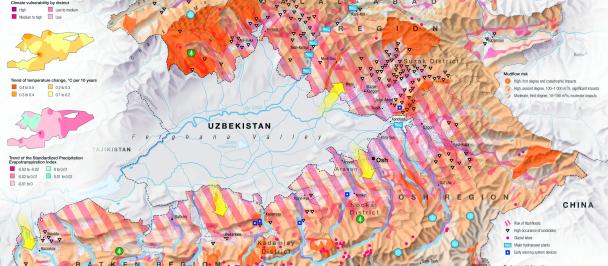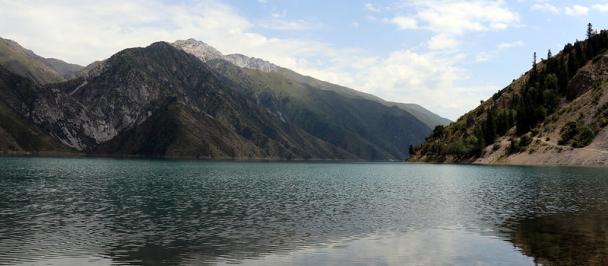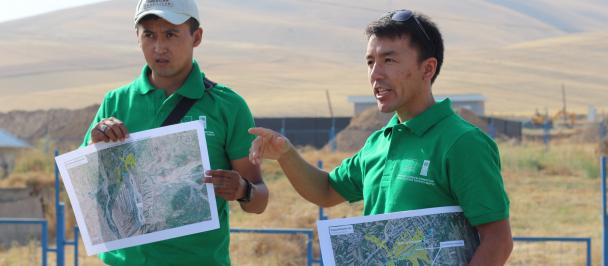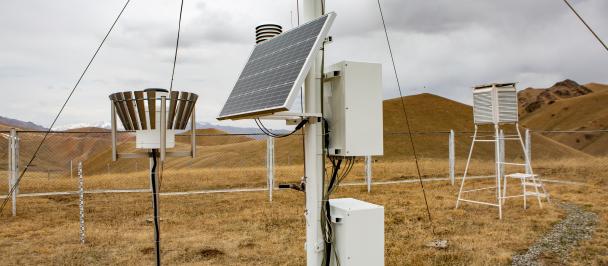Protective equipment from the negative impact of hazardous tailings transferred to the village of Sumsar in Chatkal region. Photo: UNDP in Kyrgyzstan.
UNDP's Disaster Risk Management Program in the Kyrgyz Republic transferred protective equipment to the local population living in the village of Sumsar, Chatkal District, Jalal-Abad Region, for a total amount of 822,500 soms. It was carried out under the “Improving Community Capacity to Reduce Risks Associated with Uranium Tailings” project, implemented jointly with the Environmental Management Program, funded by the Swedish International Development Cooperation Agency.
The village of Sumsar is located at a distance of 248 km from the regional center of the city of Jalal-Abad. The population of 6,427 people lives surrounded by three tailings of a lead-zinc mine with a total mass of 4.5 million tons.
Aytykul Rysbekov, the head of the Sumsar ayil okmotu, noted: “Masks, protective equipment, first aid kits and other types of equipment handed over will be distributed among families that are at risk due to the proximity of highly toxic tailing dumps and will be used during public works to protect against their negative impact.”
In total, during the period of operation of the Sumsar mine for the extraction and processing of lead-zinc ores from 1951 to 1978, 72 thousand tons of lead and 16 thousand tons of zinc were obtained. On average, 90% of these metals were extracted from the mined ore, and about 10% of lead and zinc ended up in processing waste, which are concentrated in three tailing dumps located in the village of Sumsar. Waste accumulated in tailing dumps in the village of Sumsar belongs to the 4th hazard category according to the State Waste Cadastre of the Kyrgyz Republic.
The territory of the village is a halo of dust pollution caused by the blowing of the tailing’s material and the transport of heavy metals from the surface of the tailings’ ponds. Increased mudflows and flash floods cause undermining of the banks of the Sumsar River, on which roads and bridges, gardens and vegetable gardens of local residents are located. The condition of the water intake facilities is unsafe and a large part of the population uses water for drinking on the Sumsar River section below the mine tailings and toxic tailings ponds.
In order to improve the environmental situation and reduce disaster risks, the population is ready to undertake public works using the ashar method, since the local budget does not provide funds for repair and emergency recovery work. The types of public works that will be carried out with the participation of local residents were identified on the basis of problem mapping by the UNDP DRM programme in the Kyrgyz Republic and the Aarhus Center in the city of Osh, together with deputies of the aiyl kenesh and village activists.

 Locations
Locations


